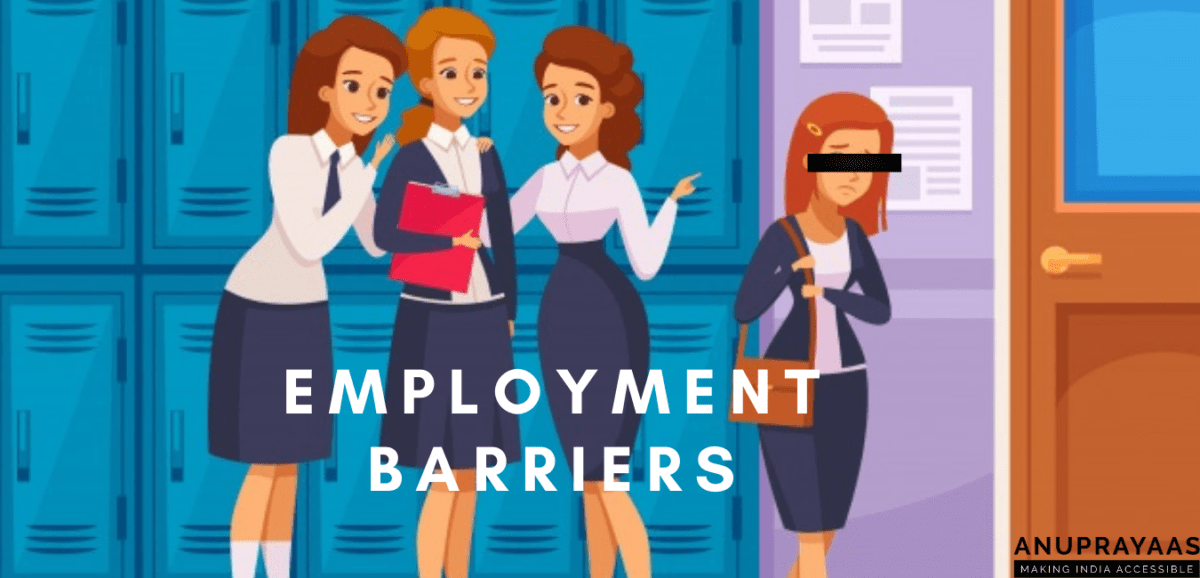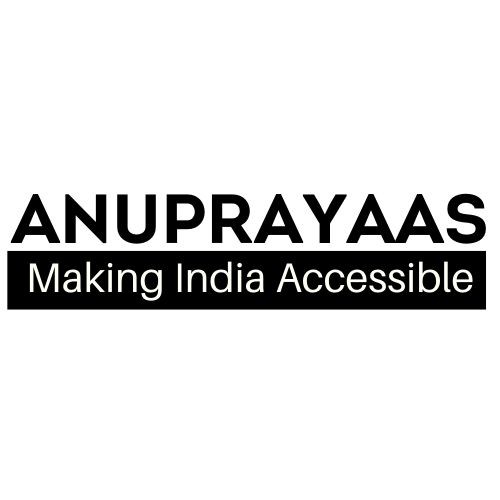Crimes on women are continually increasing as compared to men, focusing on gender inequality. Consequently, antisocial behaviour is very commonly faced by women on a daily basis. Almost every one of us is struggling to cope with gruesome attacks in social places or even domestically as well. As per Gender Inequality, Women with Visual impairment are taken as a convenient condition for exploitation and assault. Due to lack of accessibility to public infrastructure, mobility and inclusion with the environment become challenging for women with visual impairment. Subsequently, they are more prone to depression and loneliness.
Visually impaired females are more prone to assaults as compared to males. They are not safe while travelling alone. Men take a lot of advantage of girls trying to show them the way at railway stations, bus stands, and public places.
- They try to touch them in the wrong way
- grab their waist
- sometimes take them to lonely places while showcasing the path.
Not everyone is visually impaired due to genetic drift, some lose their vision accidentally and this is not the future envisioned by her.
In the World Economic Forum’s Global Gender Gap Report 2021, India has slipped 28 places. India’s rank is 140th among 150 countries, and one of the worst performers in South Asia.

In recent example
On April 18, 2020, during the lock-down, a woman was alone at her house as her family got stuck in Rajasthan due to the first wave of COVID-19. The 54-year-old woman got raped by an unidentified accuser inside her house while she was asleep.
This is an example to uncover weakness and the shaky circumstance looked at by outwardly visually impaired ladies. It isn’t just hard for them to be aware of the circumstance yet additionally amazingly hard to recognise the individual. In addition, to inform anybody – a neighbour or the police as the accused discovers simple ways for escape. Therefore, many crimes get brushed away or remain unreported as the criminal remains unidentified.
Some decades ago, females with visual impairment remained inside their houses, were not allowed to go out to study or work. While the men had all the access to visual aids such as braille materials. With all the later advancements, Females started moving out of their houses as per gender equality laws. To educate themselves and get an opportunity;
- study in highly reputed institutions
- seek jobs in various sectors such as Banks, Universities, Civil services, VI schools
- pursue research, etc.
As their entrance into such fields began expanding, their difficulties to counter the male dominance too became mind-boggling and indispensable for their endurance. Gender inequality, provocation, and violence extended for women with visual impairment.

There is not just one Reason
- Visual impairment is not the only reason for facing assault and exploitation. Furthermore, women with various impairments such as a person who is hard of hearing, hard of speech, person with a mobility problem or cognitive problem, face many challenges in various fields such as,
- mobility problems
- employment barriers
- academic challenges
- domestic violence.
Females with visual impairment are more prone to victimisation due to dependency stress. They need carers and are almost dependent upon them for taking care of them and guiding them to walk through new places, for their daily living such as food, bathing, etc.
Challenges Faced by women with Visual Impairment

Mobility Problems:
The women with visual impairment confronts hardships in walking on pavements due to lopsided surfaces, open sewer vents, parked vehicles, sellers, and so on. Hardships confronted while utilising public vehicles included
- the stature of the boarding stage
- insufficient reservations
- fewer announcements, and so forth.
Moving from one place to another is emotionally stressful and a very challenging task for persons with visual impairment.
Employment barriers:
There is very high competition nowadays in the working sector especially for females with visual impairment;
- insufficient transportation assets
- trouble in finding proper job positions
- absence of long haul work mentors
- lacking financing for hands-on assistive innovation on the job
- communication barriers.
The most common barrier faced by females is a negative employer attitude. Due to lack of proper communication knowledge at the workplace as in how to behave and communicate to a person with impairment and lack of disability awareness sessions.

Academic Challenges:
The lack of adequate sources for studies in regular schools, as the curriculum, is designed for fully sighted students and educational lessons are delivered through sight-related tasks. The students who opt for science as a mainstream subject in higher classes face many academic challenges due to a lack of hands-on interaction with lab materials and activities with visual impairment.
Accordingly, they might foster negative perspectives towards educational organisations, subjects, materials, educating learning techniques, and informative methodologies and because of negative perspectives, they might even quit their schooling.

Domestic Violence:
The woman with visual impairment is not even safe in her house as parents mostly keep caretakers for their daily living as most of the parents are working. The caretaker sometimes gets aggressive and stressed by their demands. The visually impaired get victimised easily due to unknowing sexual gratification. Sometimes, close relatives also take advantage of their visual impairment by making videos of them while changing clothes or taking a bath. Mostly these harassment they face since childhood and are unable to tell their family members to avoid stressful situations.

Some crimes are seen as less serious

Our Government asks for evidence to file a case against the criminal. As when a woman with visual impairment faces harassment or violence and is unable to recognize the criminal. The case brushes off, not gets more attention. This distressing nature of our legal system creates a challenging barrier between the prosecution of offenders or abuse culture. Mostly filed cases are about theft and not about any physical assault.
Violent crimes and physical harassment go unreported in legal records. Sometimes family members fear daily rounds of police stations and get afraid of getting into these messes. Therefore, these crimes get unreported and are hence, seen as less serious crimes.
Call for Justice

We need to provide opportunities for individuals with impairments to report exploitation and enable them to get to equity. We likewise need to give stable lodging, backing, and individual consideration that isn’t dependent on solitary assistance, or a solitary carer. This would mean suitable choices are accessible for individuals with in-capacities who might end up in dangerous or abusive conditions.
In a general sense, we need to improve local area mentalities, beginning with administration conveyance, police, well-being experts, and the legitimate calling. At the point when society holds perspectives that individuals with in-capacities are lesser, this creates hurdles to precisely representing and considering responsibility, the occurrences of misuse and assault we know are all very common.
General Self-efficacy in Visually impaired females

Females should learn self-efficacy fundamentals to live a courageous life and improve their quality of life. With high self-efficacy, a person considers a problem as an opportunity to learn more or as a challenge that can be overcome and does not consider it as a hurdle or threat. Females with Visual impairment should learn self-defence to boost up their self-esteem. This will raise a person’s belief in his/her ability to perform any task confidently. A person with high self-efficacy leads a more successful and happy life.
CONCLUSION
These barriers create a very negative impact on them. They hinder their self-esteem and confidence. There is a need in this way to distinguish academic issues visually impaired students experience when learning in regular schools. Knowledge about self-efficacy fundamentals and significance for improving the quality of life of females with visual impairment. We are also working on improving the lives of persons with visual impairments by implementing braille maps, braille signs, etc. in all public places. We aim in making all the public infrastructures available for all persons with impairments. You can go through all our works and to reach us for conducting a Disability Awareness Program for your School, Office or employees by clicking on the below link
https://anuprayaas.org/contact-us/
Anuprayaas conducts Disability Awareness Programs for Employees and have sensitized more than 8500 people through our programs.

